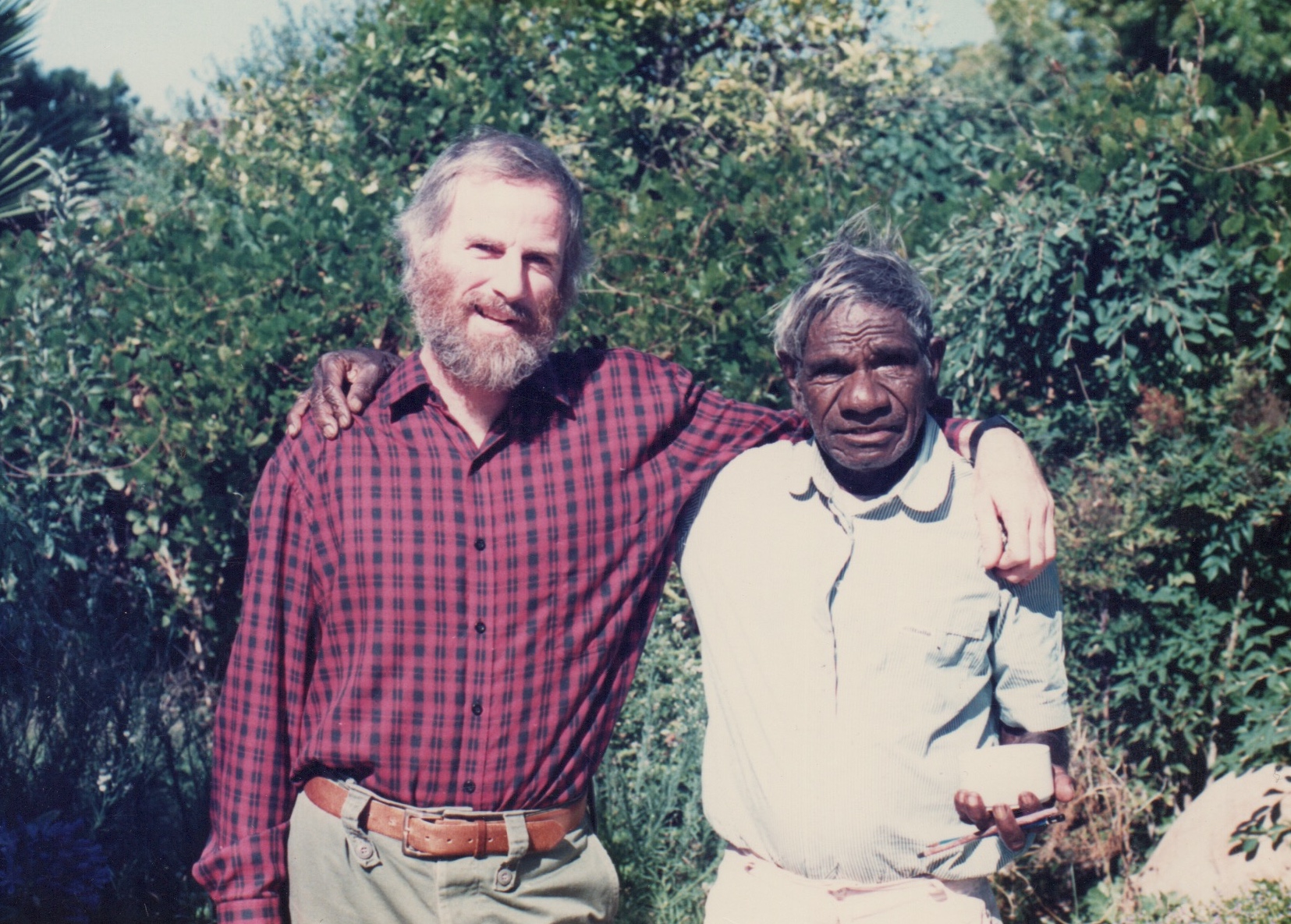COLLECTION OF THE LATE DUNCAN KENTISH
South Australian fine art dealer and collector, Duncan Kentish (1945–2012) was exceedingly passionate about Aboriginal art. He spent the last thirty years carefully collecting museum-quality pieces from across the continent, and from the late 1980s onwards, he dedicated his energy to developing the careers of a small number of artists who had settled in the Fitzroy Crossing region of Western Australia. Kentish’s Adelaide home resembled a cabinet of curiosities of Australian Indigenous art and material culture, and Deutscher and Hackett is pleased to offer a group of significant pieces from his personal collection here for the first time.
In the early 1960s, with a degree in anthropology from the University of Queensland, Kentish began working with Aboriginal people – firstly, in Papua New Guinea and later, in Australia. By mid-1984 he had assumed the temporary position of Outstations Advisor in Docker River, Northern Territory. It was here that he met and worked with the great Anatjari III Tjakamarra, while assisting Papunya Tula Artists who were unable to service Docker River at the time.
Between 1982–1986, he was also employed as a project officer for the Department of Aboriginal Affairs, Alice Springs. During this period, Kentish was introduced to the paintings of Wangkajunga artist, Jarinyanu David Downs, and accordingly fascinated by Jarinyanu’s early paintings, he decided to visit the artist in his hometown of Fitzroy Crossing.
When Kentish first arrived in Fitzroy Crossing in the late 1980s, Mangkaja Arts, the Aboriginal owned art centre, had closed and it was not to be re-established until 1991. Thus, throughout the 1980s, senior men such as Jananggoo Butcher Cherel and Jarinyanu had developed an entrepreneurial approach to their art-making, selling their works through informal networks, locally and in Broome. With relatively little support for artists in the Kimberley at the time, it is logical that artists worked with individuals such as Kentish to assist in the development and sale of their art.
From 1986, Kentish built working relationships with Pijaji Peter Skipper and Jarinyanu, Jananggoo Butcher Cherel, and later Mawukura Jimmy Nerrimah. The paintings by Jananggoo, commissioned by Kentish between 1989–1992 include some of his earliest documented works. Very few acrylic paintings on canvas exist from this period particularly of the scale on which Jananggoo was painting at the time. Permanent Waterholes Along The River, 1990 is one fine example from this rare collection.
Kentish worked with Pijaji from 1987–1993, and as the artist recalls, it was during this time that the he shifted from painting ‘light works’ of punarra punarra (designs carved on artefacts and patterns created in the jilji) to specific locations in country, such as Jila Japrinka,1 featured in the significant early example offered here which illustrates Pijaji’s shift in style.
Of these four men, Kentish’s professional collaboration and friendship with Jarinyanu was the most significant, becoming the focus of both his and Jarinyanu’s careers. Kentish oversaw Jarinyanu’s inclusion in over nine international exhibitions and mounted a number of important solo shows, most notably at Bonython-Meadmore Gallery, Sydney (1988); Chapman Gallery, Canberra (1991); and Ray Hughes, Sydney (1995). One the artist’s first paintings of the subject Wakaya Ceremony, 1987, is a superb example of Jarinyanu’s unique and ground breaking style.
According to Kentish, Jarinyanu would regularly remark, ‘I’m different!’,2 and indeed many would agree that Jarinyanu’s figurative artistry that emphasised the individual personality of the ancestral figures (particularly the rain-maker Kurtal) is unlike any other Kimberley artist of his time. Similarly, those closest to Kentish have described him as ‘left of centre’. Perhaps it was this shared sense of being different that encouraged such a strong friendship and a successful working relationship.
In the last solo exhibition Kentish held of Jarinyanu’s work, he paid tribute to the artist and celebrated his individuality, embarking, ‘Considering the traditions he came from, Jarinyanu was quite revolutionary... His images have a startling immediacy, heightened by an intensity of focus and a display of sometimes heroic proportions. But grand though these paintings undoubtedly are, they’re but a pale after image of the power and fragile beauty of their creator. The memory of key dance gestures, a few words of singing, is infinitely more precious.’3
1. Dayman, K., ‘Pijaji Peter Skipper’, in Of One Substance: Painting and Place, works by Pijaju Peter Skipper for the collection of Duncan Kentish, Greer Adams Fine Art, Sydney, 2015, p. 6
2. Kentish, D., ‘Jesus Country in Mount Gambier: The Southern Explorations of Jarinyanu David Downs’ in “You Listen Me!” – An Angry Love, Writings in honour of Jarinyanu David Downs, Duncan Kentish Fine Art, Adelaide, 1995, p.2
GREER ADAMS
Curator and Collection Manager
Collection of the late Duncan Kentish
